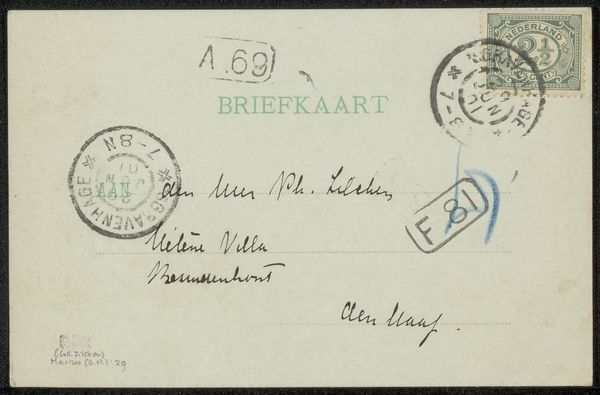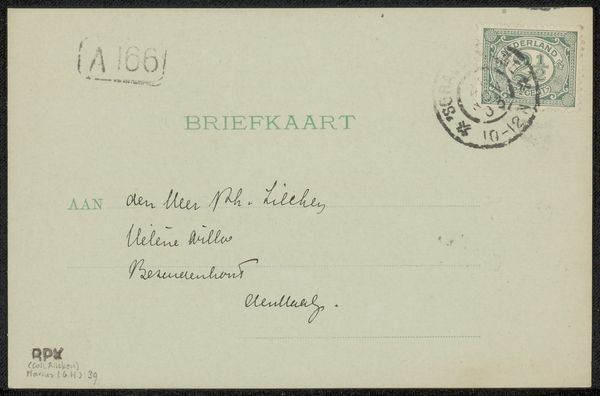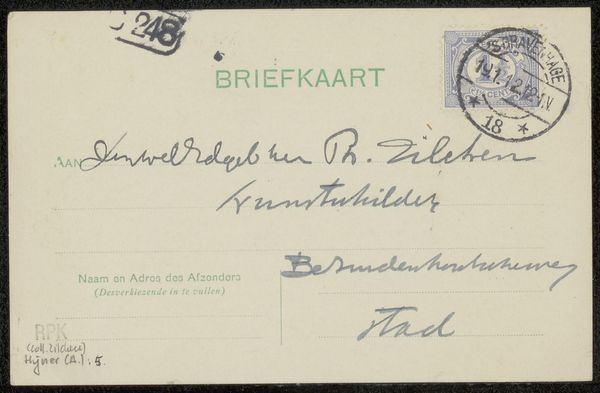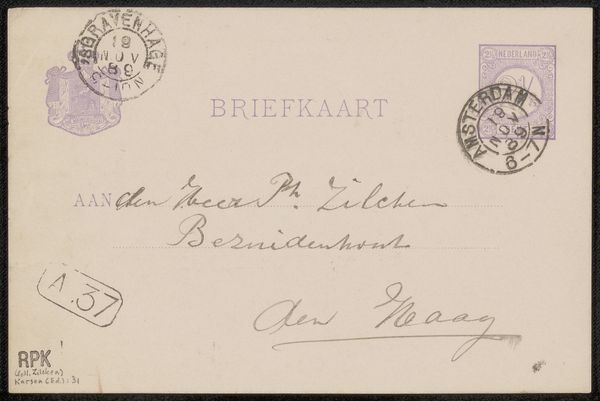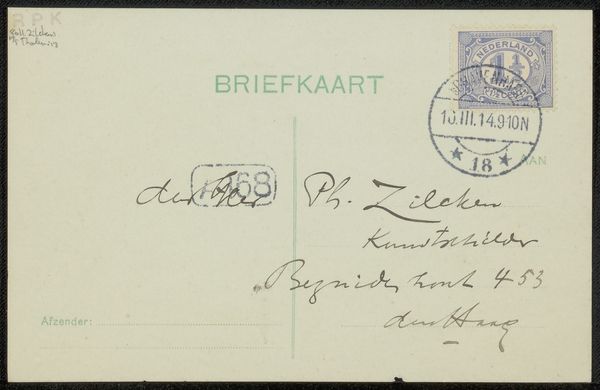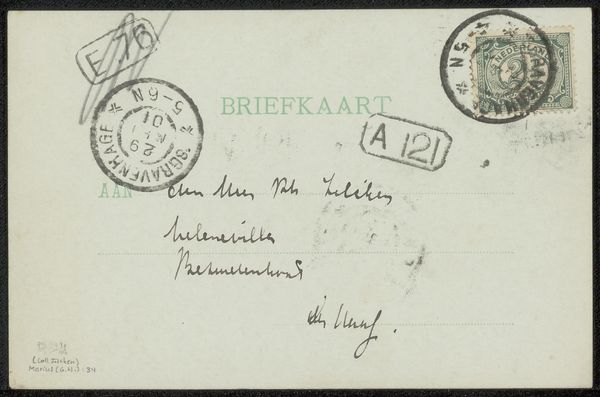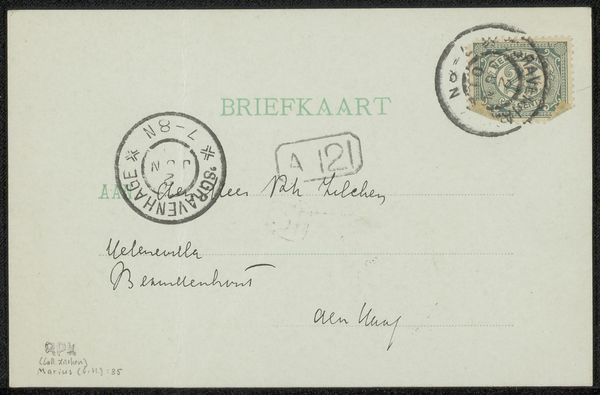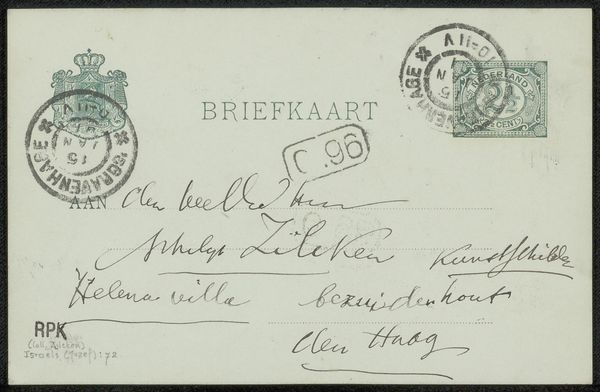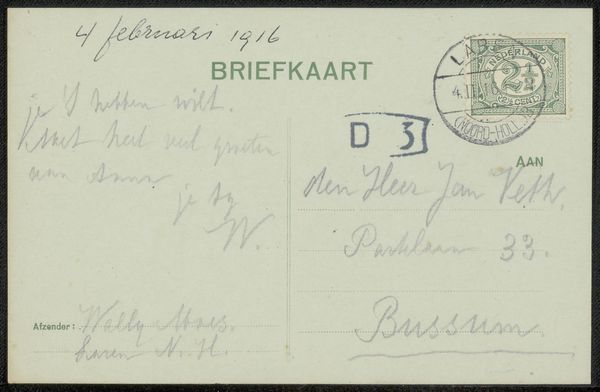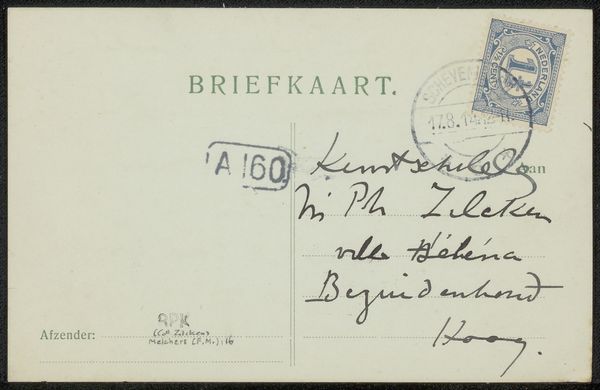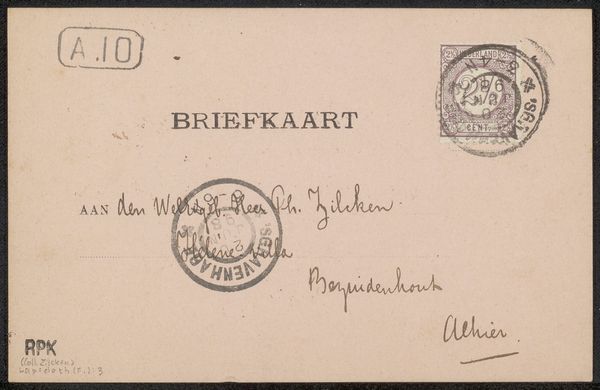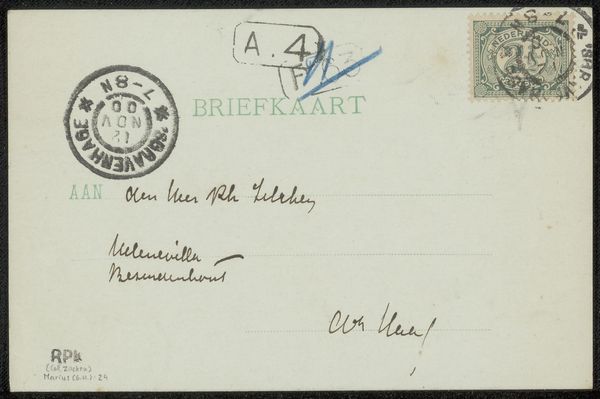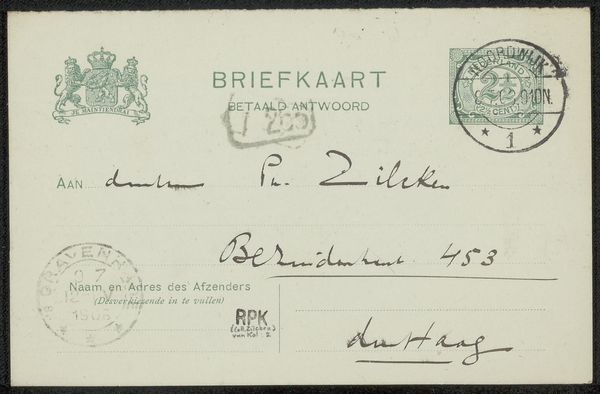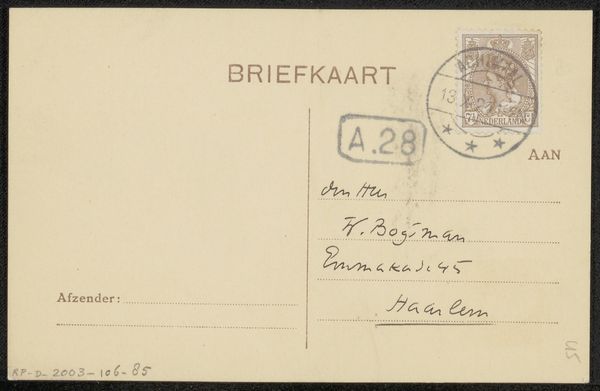
drawing, paper, ink
#
drawing
#
paper
#
ink
Copyright: Rijks Museum: Open Domain
Curator: Let’s discuss "Briefkaart aan Philip Zilcken" (Postcard to Philip Zilcken), a piece made before 1910 by Grada Hermina Marius. The media includes ink drawing on paper. What are your first impressions? Editor: I am struck by the evidence of labor embedded here—the practical intent, the network of postal workers and readers connected across distances. It transforms a mundane piece of stationery into something profoundly connected to its era and community. Curator: Indeed. From a formal perspective, the arrangement of the ink stamps and hand-written text provides an asymmetrical, yet compelling, distribution of visual weight. The artist subtly disrupts the rectilinear form with the curved lines of the address and signatures, creating an engaging dialogue between structure and spontaneity. Editor: I am thinking also of the materiality itself. The specific paper chosen and the qualities of the ink used; we might consider its availability at the time. These reflect standardization, access, and costs affecting the distribution and volume of mail itself. The marks and traces we see reflect more than just personal gesture; they expose wider networks of making. Curator: Semiotically, the stamps become signs not just of postage, but of civic participation. Their placement on the card, interacting with the scripted message, invites multiple interpretations. The paper itself represents not just a surface but also a support structure upholding this exchange of symbolic information. Editor: Yes, considering this artwork’s material properties invites analysis beyond traditional aesthetic considerations. We're asked to consider these common components beyond high-art categories and to look for a human story of routine labor embedded within mass-produced items. Curator: Reflecting on our perspectives, my analysis reveals how intrinsic structural relationships within the artifact support meanings beyond simple correspondence. Editor: My reflections highlight how this everyday postal medium transcends function—bearing witness to the value of the processes of production and exchange that shaped social bonds in Marius's time.
Comments
No comments
Be the first to comment and join the conversation on the ultimate creative platform.
